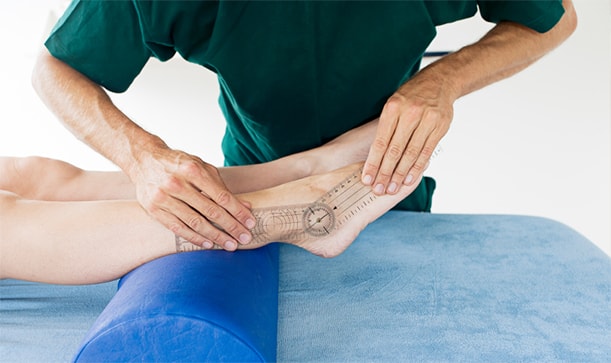CK Physiotherapy
AREAS COVERED
W7, W5, W13, Ealing, West London
57 Elthorne Avenue
Hanwell, W7 2JY
T: 020 8566 4113
M: 079 572 46185
E: info@ckphysio.co.uk
Location / Parking
We are situated in Hanwell, between Boston Manor Road and Northfields Avenue, south of the Uxbridge Road.57 Elthorne Avenue
Hanwell, W7 2JY
There are parking restrictions Mon - Fri 9-10am and 2-3pm. If you need a permit during this time please inform your therapist when you arrive. There are no parking restrictions at other times.
Opening Times
Please phone the number above during working hours to make an appointment. Our reception service will be happy to book your session.
London Underground / Bus Services
London Underground
10 min. walk from Boston Manor Tube Station.
15 min. walk from Northfields Tube Station.
Bus Service
E8, E3, E2, 207, 607, 83
Request Call Back
Our Blog
Physiotherapy or Chiropractic Care? Know Which One You May Need
By: BryanKelly (Psst, View author in Google Plus) Date: Feb 23rd, 2021Physiotherapy treatment versus chiropractic care is a common dilemma. When you have been injured, feeling joint or muscle discomfort or even experiencing severe pain, the difficulty of what professional to turn to comes into question.
Today we will explore the similarities, differences and benefits of both physiotherapy and chiropractic treatments. We will also take a look at how you can decipher which treatment you require, by determining what symptoms and indicators you have such as pain, joint stiffness, or difficulty in moving.

What are the similarities between physiotherapy and chiropractic treatment?
Physiotherapy treatment and Chiropractic care share some similarities. Both practices are delivered by experienced, qualified and licensed professionals who have taken years to perfect their techniques by knowledge gained through the use of scientific investigation.
Physiotherapists and Chiropractors have the same intent and similar goals in mind when treating a patient, yet each may go about achieving them in slightly different ways.
Physiotherapist and Chiropractor Similarities:
• Evaluate your symptoms, examine yourself and explore your health history
• Management of pain and discomfort through the use of noninvasive/ nonsurgical methods
• Use manual or hands-on therapy to treat specific conditions
• Treat or co-treat conditions
• Consider the wellbeing of the patient and what can be done outside of their sessions
Although Physiotherapists and Chiropractors have similarities there are differences in their approach to resolution and treatment in some key areas.
Physiotherapist and Chiropractor Differences:
|
Key Area |
Physiotherapy Treatment |
Chiropractic Care |
|
Goals |
Restoration of function with comfortable and pain-free movement |
Alignment of the spine prevention of injury and pain relief. |
|
Focus |
How the body moves and functions as a whole |
On issues mainly related to the spine (back & neck) and joint pain of hips and legs |
|
Performance |
To assist you in performing stretches and exercises to improve mobility |
Perform manipulations and adjustments to aid self-healing |
|
Environment |
Able to work in numerous healthcare environments and even the home |
Usually need specialised spaces, with equipment to perform manipulations and adjustments |
What does a physiotherapist or chiropractor do?
Both practices help provide treatment to manage pain, stiffness and improve function. Now that you have taken a look at some of the similarities and differences, we need to delve a bit deeper to see what each practitioner does. This way you will be able to gauge which treatment will serve you best and for a particular ailment, accident or injury.
How do physiotherapists provide care?
A physiotherapists focus is on prevention and rehabilitation, providing treatment for those who have been affected by injury, disease or disability. Attained by the use of exercise, manual therapy, electrotherapy and advice to help reduce their pain, improve mobility and restore functionality.
Treatment may include (but limited too):
• Evaluation - of whole-body health, including pain, flexibility and movement
• Activity - manipulation/mobilisation, exercises and stretches to improve mobility and strength
• Education - instruction and advice on how to improve posture and avoid injury
• Intervention - a variety of therapies such as manual, non-invasive and non-surgical
• Prevention - plans to improve overall health & wellbeing, measures to reduce or prevent injury and disease.
The amount of time you will spend with your physiotherapist will be dependant on your specific need.
Improvement in your condition may be noticeably quick, yet long-term sessions may be required to restore you to your highest level of functionality.
Continual progression assessments will take place and high involvement of your own recovery and development is encouraged.
When is physiotherapy used?
Physiotherapy can be used by people of all ages to treat a wide range of health conditions and injuries. In addition to monitoring your overall health, physiotherapy targets areas such as mobility, strength, pain and circulation, that need improving as a result of illness, injury or disability.
Listed are some of the problems physiotherapy treatment can be used for (but not limited to):
• Bones, joints and soft tissue - can include back, neck or shoulder pain and sporting injuries
• Brain or nervous system - mobility problems resulting from stroke, multiple sclerosis etc
• Heart and circulation - rehabilitation after a heart attack, heart & circulatory diseases
• Lungs and breathing - problems experienced from conditions such as COPD, Cystic fibrosis etc
• Surgery - effective post-surgery rehabilitation
Physiotherapy aids in improving your physical activity whilst helping to prevent further injuries.
How do chiropractors provide care?
Chiropractors use various techniques to treat bones, muscles and joints. They use a hands-on approach to rectify these problems and help improve motion whilst reducing pain and inflammation. Chiropractic philosophy is that the body can heal itself with specific chiropractic intervention.
Treatment may include (but limited too):
• Evaluation - symptoms based on a physical exam and tests
• Activity - provide adjustment or manipulation to specific areas of the body
• Education - discuss other forms of treatment
• Intervention - such as manipulation, joint positioning, pulling and stretching of muscles
• Prevention - recommend exercise or lifestyle adjustments that can help to reduce pain and inflammation.
Chiropractic treatment is dependant on your level of injury but is usually offered over a set period of time to see noticeable results.
When is chiropractic care used?
Chiropractic care is used for many health conditions for people of all ages but particularly focuses on the musculoskeletal and nervous system. Chiropractic care is considered complementary and alternative medicine (CAM), meaning it is not a conventional medical treatment.
Listed are some of the problems chiropractic care can be helpful for (but not limited to):
• Back pain
• Neck pain
• Joint pain
• Headaches
Like Physiotherapy, chiropractic care does not involve the use of medications or surgery and is a treatment you may want to consider before any invasive procedure.
Who to choose for your treatment?
You have explored the similarities and differences of both practices and are aware of what they each do respectively, how the treatment is applied and what benefits are produced. We know that was a lot of information to digest, effectively you took a mini crash course on both physiotherapy treatment and chiropractic care! But you still may be questioning, what to do now?
At CK Physio, we are well aware that when you are injured or in pain, the urgency in choosing the correct treatment to solve your issue can be daunting and difficult. You want to resolve your problem as quickly as possible and be confident that you’re receiving the best treatment possible.
Our experienced physiotherapists invite you for a virtual consultation, which you can access via our online booking form today. Use our therapists to learn more about and talk through the treatments available to you before making that final judgement of whether physiotherapy treatment or chiropractic care is needed.





